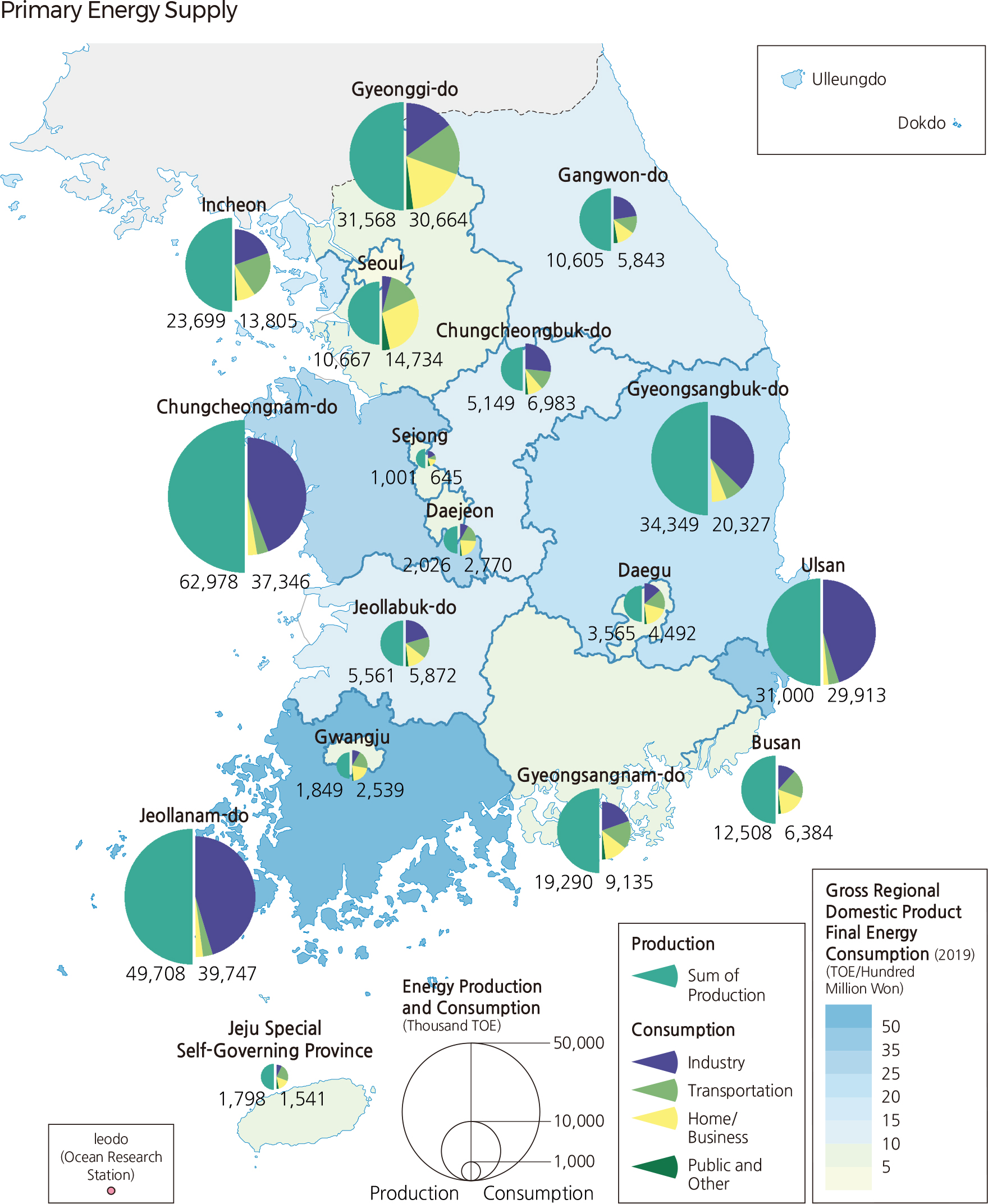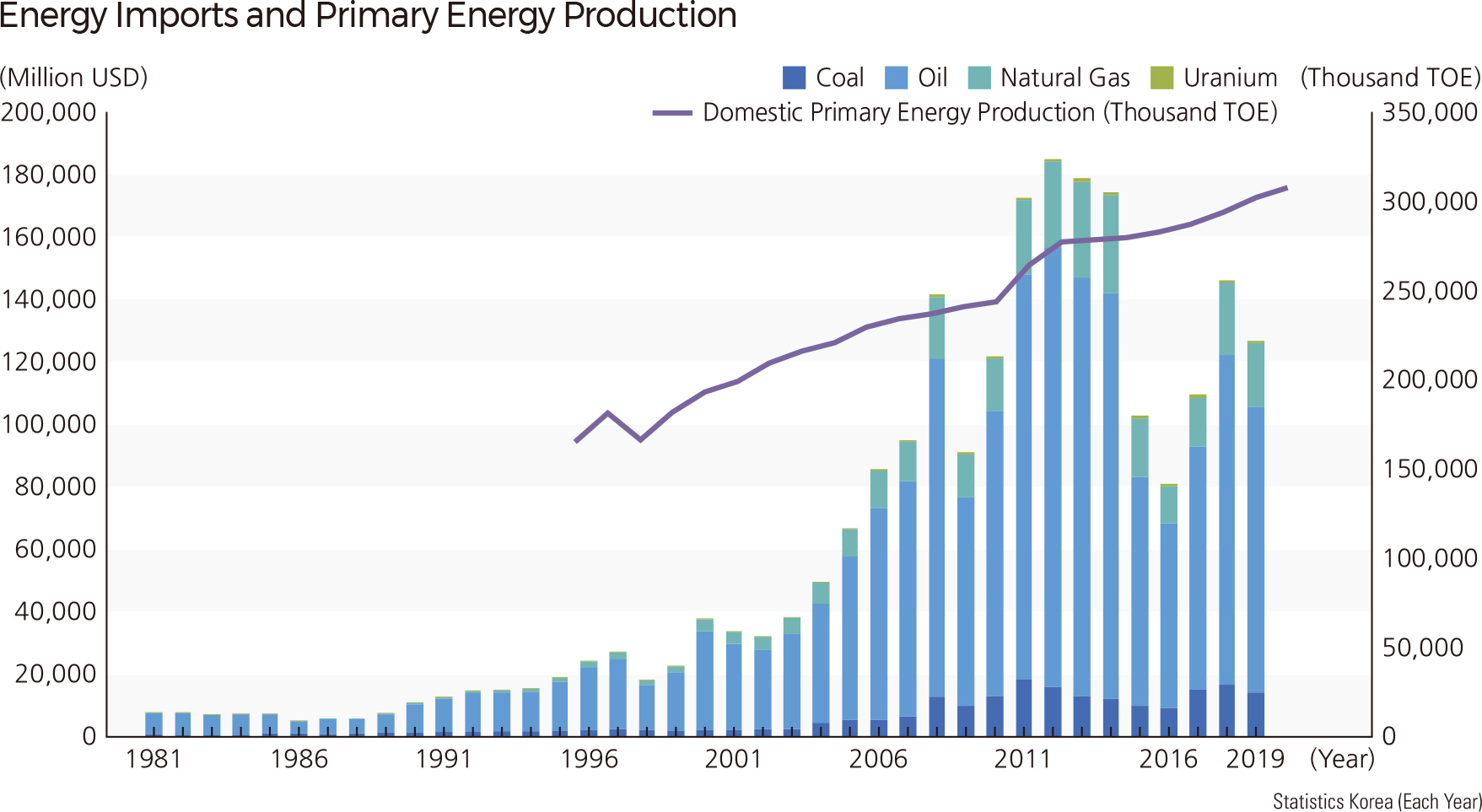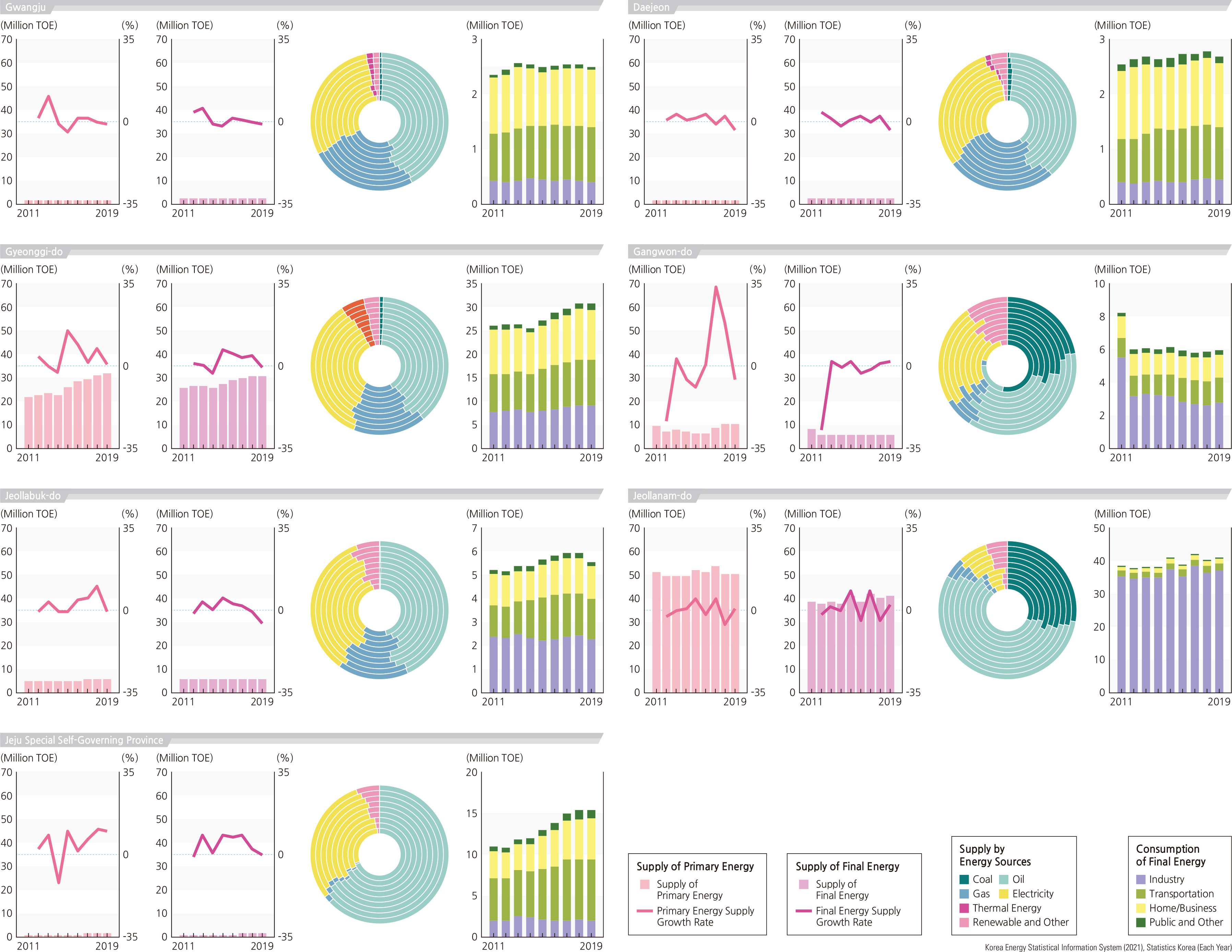English III 2021
Korea’s primary energy supply in 2019 was 303.1 million TOE (tonne of oil equivalent), a 1.67-fold increase from 181.7 million TOE in 1999, 20 years ago. Korea imports most of its energy. Therefore, energy imports have increased as much as the demand for energy has increased. After the financial crisis in 1998, energy imports plummeted from 27.3 billion USD the previous year to 18.3 billion USD. Energy import varies greatly according to economic fluctuations. For example, $184.8 billion of energy was imported in 2012, compared to $126.7 billion in 2019, which is the same as ten years ago. The share of energy in total domestic imports increased up to 36% in 2012. Then it fell to 27% in 2018 and 25% in 2019. By energy source, oil accounted for 72% (91.2 billion USD) of energy imports in 2019, followed by natural gas (20.6 billion USD), coal (14.2 billion USD), and uranium (740 million USD). Oil alone accounts for 18% of Korea’s total imports, and in 2012, this proportion rose to 27%. Dependence on energy imports also exceeded 80% in 1987, 90% in 1991, and recorded 96–97% in the early 2010s (nuclear fuel is included in imports). Although it slightly decreased to 93.7% and 93.5% in 2018 and 2019, it still showed a high dependence on energy imports. Even if nuclear power is included in domestic production, the dependence on energy imports exceeds 80% (84.4% in 2018 and 83.2% in 2019). |




